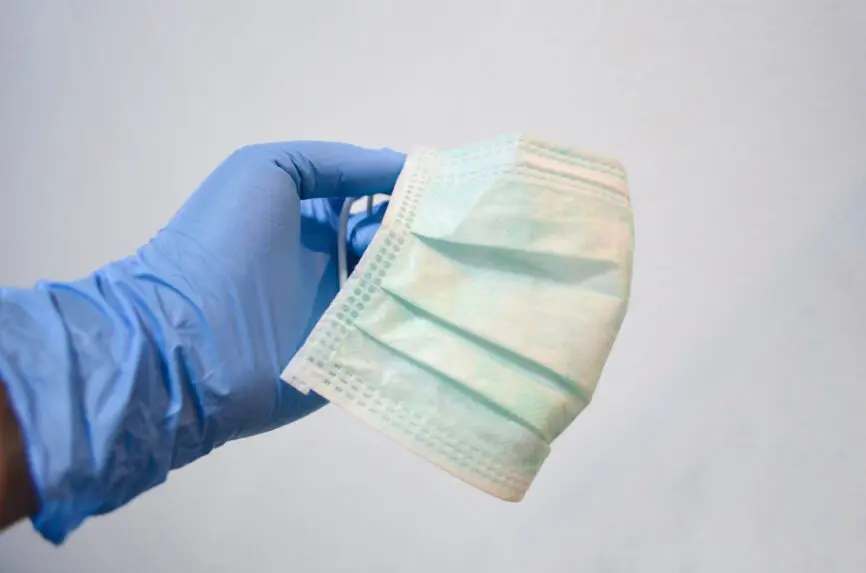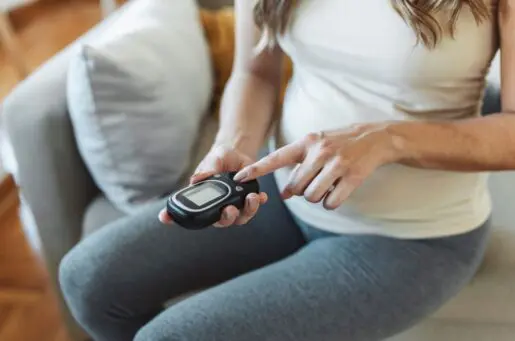Bioethics Forum Essay
The CDC’s Misguided Medical Masking Policy
The Centers for Disease Control and Prevention’s revised guidelines have done away with universal masking at health care facilities, making masking optional if community Covid transmission isn’t high. It’s the latest attempt of public health officials to adapt their guidance to meet the country’s fatigued sensibilities. When President Biden declared the pandemic was over, he was saying that most of society had embraced a return to normal—put away their masks and hand sanitizer and stopped being anxious about Covid, which they’ve decided to live with.
Of course, the CDC acknowledges special considerations are warranted. It advises caregivers to wear masks when treating high-risk patients, such as the immunocompromised, or when outbreaks occur in a health care facility. Unfortunately, these cautions aren’t enough.
Consider the concern that Scott Landes, an immunocompromised sociologist, expressed on Twitter about his recent five-day hospitalization. During the first night, a physician admitted a truth that health care professionals have been reluctant to admit publicly before the pandemic: immunocompromised patients aren’t safe in the hospital. Their lives are at risk because their care isn’t limited to specially designed areas, like patient rooms on cancer treatment floors.
As Scott notes, medical testing and treatment occur at different places within the hospital, with immunocompromised patients being “carted here and there” to meet with various care professionals. Some of them, he says, don’t have immediate access to the patient’s medical records. Others don’t check them. It’s a dangerous situation with Covid and flu lurking—something that should be remedied, not further exacerbated as an inescapable medical reality.
Scott rightly observes that this situation places a heavy burden on overworked medical transporters to assume responsibility for disclosing a patient’s status, as well as reminding their co-workers to observe proper precautions when masking is optional. It also requires immunocompromised patients to advocate for themselves when they’re predictably and understandably anxious, tired, and not thinking as clearly as they would like. And even if transporters and patients could meet the unreasonable burden of always being on top of their game, that wouldn’t address a serious problem: the risk of immunocompromised people getting exposed to infection when being transported in halls, lobbies, and elevators and left in busy waiting areas.
Perhaps CDC officials would defend their position by doubling down on their point that they recommend masking if Covid rates are high. Unfortunately, the public’s pandemic fatigue has led to decreased Covid testing. That loss of data coupled with the rate of unreported at-home tests suggests official Covid community transmission numbers are utterly unreliable, especially when getting Covid poses an exceptionally high risk to some.
Perhaps hospital administrators would say the real issue is the need to improve communication systems—to find a way to ensure all high-risk patients are clearly identifiable. We’re not saying this is impossible, but it raises questions about efficacy and ethics. And even if there’s a cost-effective, efficient, and nonstigmatizing way of designating high-risk patients, adopting the procedure will take time. That’s time during which lives that merit protection will be at risk.
While many situations call for compromise, there’s no need for health care facilities to bend so far that they abandon justice for patients at high risk of infection. The CDC’s attempt to offer pragmatic advice does just that. It invites everyone to value the freedom to avoid being inconvenienced by wearing masks rather than protecting the most vulnerable in hospitals, nursing homes, clinics, and long-term care facilities.
Contrary to the CDC, we believe that masks should be required by all care staff in hospitals, nursing homes, clinics, rehab facilities, and long-term care facilities when interacting with all patients unless a patient permits their removal. Likewise, all hospital, nursing home, rehab, and long-term care visitors should wear masks unless they are in a dining facility or private room. And in a private room, permission from all patients should be required.
We realize this isn’t a perfect solution. Patients might feel subtly pressured to grant permission to unmask even if they’re uncomfortable doing so. They might worry about care staff being unkind, or worse, if not being authorized to remove their masks. But this is the best, most viable proposal given how deeply entrenched individual autonomy is in American culture—and how little bioethicists have pushed back against raw egoism and failed to embrace communitarian obligations during a deadly pandemic.
Evan Selinger, PhD, (@EvanSelinger) is a professor of philosophy at Rochester Institute of Technology and a scholar-in-residence at Surveillance Technology Oversight Project. Arthur Caplan, PhD, (@ArthurCaplan) is the Drs. William F. and Virginia Connolly Mitty Professor of Bioethics at New York University Grossman School of Medicine. He is a Hastings Center fellow and a member of The Hastings Center’s advisory council.
Note: Scott Landes gave us permission to discuss his tweet.














Selinger and Caplan are right to criticize the CDC’s revised masking guidelines, which seem to reflect political concerns about the public’s fatigue with, and rejection of, proven public health measures against Covid-19. I’d like to add three points to their account of the problem. First, local and state public health officials remain able to impose requirements on healthcare facilities in response to the important concerns that the authors raise concerning patient safety, especially for people who are immunocompromised. In our system of government, authority over most most public health functions has resided below the national level; for example, the requirements imposed in a number of jurisdictions in recent years that healthcare staff must wear masks in patient-care areas during flu season originated from such agencies, not the CDC. Second, I don’t think the problem can be laid at the feet of bioethics, whose practitioners the authors accuse of having failed to embrace communitarian obligations. The inapplicability of “patient autonomy” as the relevant ethical north star in a public health emergency has been well argued by leading figures in public health ethics, who have also emphasized the need to be guided by the principle of justice (which is so often honored in the breach in clinical bioethics) during this pandemic. Third, as concluded by a National Academy of Medicine committee on non-vaccine interventions that I chaired last year, the actual effect of scientifically validated measures in mitigating or controlling outbreaks requires that they be successfully implemented, which depends not only on their availability and adaptability in particular settings but also on the prevailing culture, norms, beliefs, and other contextual factors. What happened during the early months of the Covid-19 pandemic convinced us of “the critical influence of the behavior of and communication from leaders–particularly within governments–on the population uptake of public health interventions. In many settings, trust in such elected leaders was undermined when policies did not rest on a strong evidence base or official mandates seemed to run counter to scientific findings.” The problems identified by Selinger and Caplan suggest that this phenomenon persists more than 16 months after we described it in June 2021.
Great piece. Universal masking in health care settings is already standard practice in Hong Kong and Singapore and other countries in Asia, and has been adopted by a few U.S. hospitals. People who are immunocompromised should not have to worry that their lives are at risk if they need to be hospitalized.